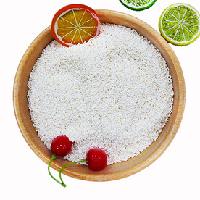-
Categories
-
Pharmaceutical Intermediates
-
Active Pharmaceutical Ingredients
-
Food Additives
- Industrial Coatings
- Agrochemicals
- Dyes and Pigments
- Surfactant
- Flavors and Fragrances
- Chemical Reagents
- Catalyst and Auxiliary
- Natural Products
- Inorganic Chemistry
-
Organic Chemistry
-
Biochemical Engineering
- Analytical Chemistry
-
Cosmetic Ingredient
- Water Treatment Chemical
-
Pharmaceutical Intermediates
Promotion
ECHEMI Mall
Wholesale
Weekly Price
Exhibition
News
-
Trade Service
[The role of paint]
Although the plastic parts themselves will not rust, have a certain degree of decoration, and the body-in-white also has a certain degree of corrosion resistance, spraying suitable coatings on the plastic parts or the body-in-white can prolong the service life and improve the related performance.
It is said that the role of paint mainly has the following three aspects:
-Decorative effect: to achieve high-gloss appearance, the same color or different color with the car body and other high decorative effects
-Protection effect: improve the UV resistance, solvent resistance, chemical resistance, and light aging resistance of plastic parts
-Special functions: anti-corrosion, isolation, marking, reflection, conduction, etc.
, such as scratch-resistant coatings, which can improve the scratch-resistant performance of the surface of the parts, etc.
[Main ingredients of paint]
●Resin
-Definition: Long-chain high molecular polymer synthesized from special monomers
-Purpose: The main component of the paint composition, it has the function of binding other components in the paint and forming the paint film, so that the paint film has various physical and chemical properties, and plays a decisive role in the performance of the paint film
●Pigment
-Definition: inorganic or organic insoluble fine powder with color characteristics
-Purpose: The infinite nature of pigments has formed the infinite variety of colors, making the coatings have infinite colors; the ability to cover the surface of objects; provide anti-corrosion, protection and special functions
●Organic solvent or water
-Definition: Solvents generally refer to liquid mixtures at room temperature and pressure.
They can dissolve other substances without chemical reactions
-Purpose: dilute the paint to achieve the viscosity required for their construction
●Additives
-Definition: A substance that is added in a very small amount and used to transform the characteristics of the coating
-Purpose: Additives can increase compatibility, improve leveling, improve aluminum powder arrangement, promote adhesion, improve sandability, reduce sand marks, reduce dry humidity, sensitivity to bubbles and shrinkage
【Primer】
●Definition: The first paint applied directly on the surface of the surface-treated workpiece, which is the basis of the entire coating
●Function: Prevent oxidation and corrosion of metal surface, strengthen metal surface and putty.
Adhesion between putty and top coat
【Color paint】
●Definition: The color paint is based on the primer to establish the color of the car surface, between the middle coat or primer and the varnish layer, divided into plain paint and metallic paint
●Function: coloring.
Covering and decoration
【Varnish】
● Definition: Varnish is a colorless com" href="">paint online coatingol.
com .
Transparent and shiny, so in a broad sense, clear paint without pigment is called varnish
●Function: increase the brightness and reflectance of the paint: form a film on the surface of the paint to protect the paint layer
【Non-conversion paint】
●Non-conversion coatings, also called volatile or thermoplastic coatings, are physical film forming
●Molding characteristics
-Before and after the film is formed, the molecular structure of the substance does not change, and only the physical effects such as solvent (or water) volatilization and temperature change make the coating dry and form a film
-Quick drying, poor solvent resistance, thermoplastic, softened by heat, and hardened after cooling, mostly soluble, soluble and fusible substances
●Type: natural resin, artificial synthetic resin and synthetic high molecular linear polymer that is thermoplastic resin, such as perchloroethylene resin, polyvinyl acetate resin, chlorinated rubber, acrylic resin, etc.
【Conversion Coating】
●Conversion coatings, also known as cross-linked or thermosetting coatings, are chemical film forming
●Molding characteristics
-Before and after film formation, the molecular structure of the substance changes.
In the film formation process, in addition to physical effects such as solvent volatilization and resin melting, the film is formed mainly by chemical reactions such as oxidative polymerization, condensation polymerization, and addition polymerization of the resin.
-The formed coating film can no longer be dissolved by solvent or melted by heat
●Main film-forming types: oxidative polymerization, baking polymerization, isocyanato-hydroxyl polymerization, catalytic polymerization, high-energy radiation or initiators to initiate polymerization to form film
●Type: Alkyd paint, epoxy paint, polyurethane paint, phenolic paint, etc.







